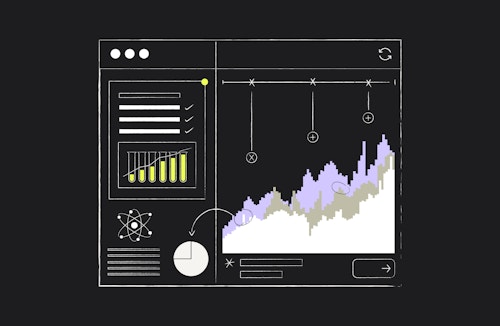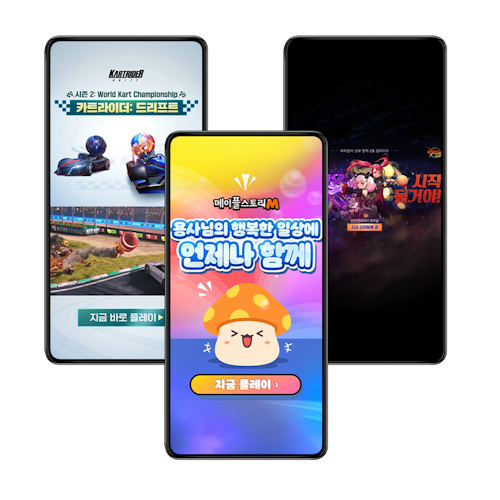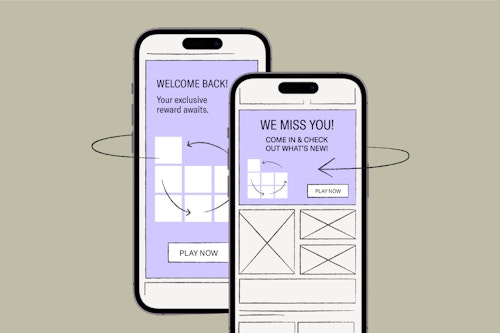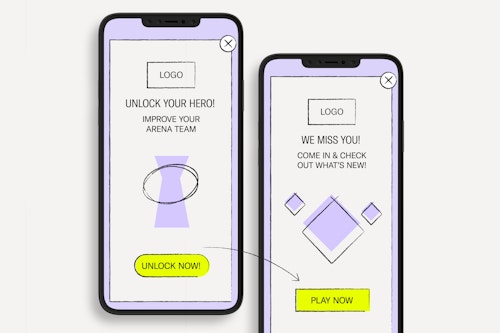How to effectively use your app’s data to maximize returns
November 01, 2023

App retargeting is all about what happens after someone has installed your app. Campaign data points can be as granular as knowing whether a user defeated a game level’s boss or if they ordered a Hawaiian pizza from their favorite restaurant that evening, meaning the potential to learn about your customers and launch high-performing ads is huge.
In this article, we look at using your app’s data to run effective retargeting campaigns and the best ways to work with external partners in the programmatic space.
The definition of "data" in app retargeting
In the context of app retargeting, “data” most commonly refers to user behavior events that come to a demand-side-platform (DSP) through an attribution provider or direct API integration. Almost all retargeting-focused DSPs work with real-time events as they contain much more useful information about user behavior compared to static user lists or Data Management Platform (DMP) created segments, both of which only offer information about users at the point when the list is saved.
Providing data: Static lists and DMP segments can hurt your performance
While it’s possible to run retargeting campaigns using static lists or DMP segments, doing so means you’ll miss out on the added returns of using advanced data-driven products.
Working with static lists or DMP segments doesn’t allow for much ad personalization (and means you will probably keep spending budget on users who have already converted). That’s because you’ll be targeting audiences based on a set criteria from a specific moment in time, as opposed to targeting them with content and messaging based on their ongoing in-app habits. By using real-time event data, you can target individual users based on the last actions they completed within your app, such as adding an item to a shopping cart or failing to complete a gaming level.
At Remerge, we’ve been running in-app retargeting campaigns since 2014 and have found that personalized ads based on in-app activity drive significantly higher click-through rates and a better return on ad spend (ROAS) compared to non-personalized ads. For instance, we recently exceeded Nexon’s ROAS goals on both iOS (+138%) and Android (+51%) by running personalized creatives for their Maplestory M game based on their users’ activity windows.

Nexon asked us to improve ROAS for MapleStory M in South Korea, on both iOS and Android. From there, we defined our two main KPIs as 'ROAS D7' and 'cost per reattribution' (CPX). Read on below to find out how we exceeded their goals.
How can you transport data for app retargeting campaigns?
1. Static user list exports are the simplest way to transport user data
Advertisers prefer this approach because it offers them exclusive control over the data - however, it is cumbersome to transport this type of data periodically. The campaign performance will likely suffer from a lack of real-time targeting and optimization.
2. Segmentation solutions from a Data Management Platform (DMP) are an improvement, but still come with limitations
This setup gives you control over which users you target and your retargeting DSP will automatically receive the data on a periodic basis. This approach is closer to real-time personalization, but campaign performance will still suffer from a lack of event attributes. Also, most DMP only offer daily segment updates, meaning you will lose out on potentially valuable insights. Examples of missing information can include: the product a user put in their cart, the level they last played, the item they purchased.
3. Providing a real-time event stream to a DSP through your attribution provider or a direct API integration is the most powerful data integration
This is very easy to do, (particularly with Remerge as we have integrations with all major attributions providers). With this setup, you’ll get all the advantages of real-time and rich data quality, meaning your chosen DSP can dynamically compose personalized content for each of your users, in real time.
Real-time events give you access to a variety of Remerge's advanced product capabilities
- Personalized creatives: Show a relevant message, product, or piece of content to every user. Dynamic product ads are one of the most effective ways to do this.
- Real-time segmentation: Advertise to your user the moment they fall into your target segment. Stop wasting money on users who already completed the desired action within your app. (re-engagement, first purchase, etc.)
- Algorithmic performance optimization: Predict the uplift in users’ conversion rates based on their previous in-app behavior.
- Uplift Tracking: See how much incremental conversions and incremental revenue your retargeting campaigns generate per segment.
What about trust and handing over your data?
Understanding how your data is processed or stored will help you make the right decisions about your DSP partner. At Remerge, we store your data in per-customer silos (data is not mixed for retargeting other apps from other advertisers, not even in aggregated form), unless you tell us to delete it. Also, we only use first party data when analyzing your users’ behavior and campaign performance.
To learn more about Remerge and how to launch a retargeting campaign with us, get in touch with the team.
Join our newsletter





